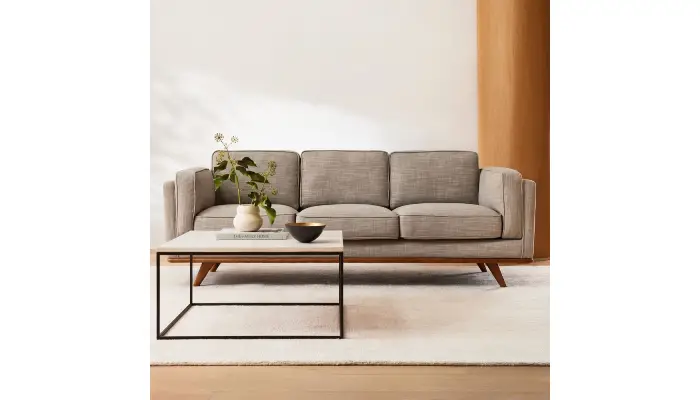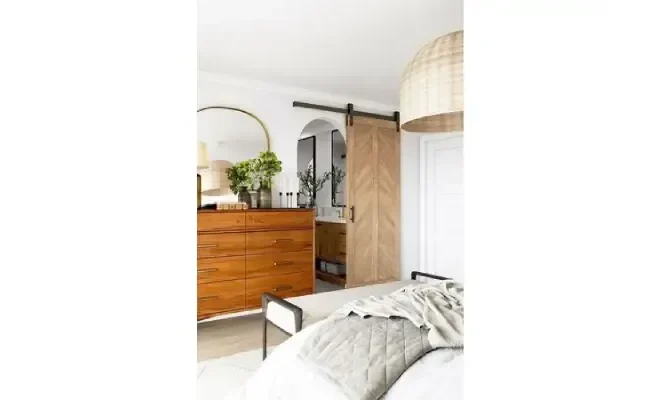
Your Guide to Renting Quality Furniture
Rental furniture can be a smart choice, especially for those in temporary living situations. It helps save money without the burden of large upfront expenses. Monthly costs vary widely; a simple living room set could range from $200 to $350, while individual pieces like sofas and tables might cost between $30 and $100 each. When selecting a rental company, it’s crucial to read reviews and ensure they offer good customer service and diverse product choices. Also, take note of delivery options and any additional fees that may arise. By being informed, you can find quality rentals that meet your needs efficiently.
1. Understanding Furniture Rental
Rental furniture is a smart choice for people in transitional living situations, like those on job assignments or internships. It offers a temporary solution without the hefty price tag of buying new items. For college students, renting is appealing as it avoids the commitment of permanent furniture, which might not fit into their plans after graduation. Additionally, renting is useful for staging homes to sell, providing a fresh look that can attract potential buyers. With a wide range of styles available, renters can easily find furniture that matches their taste without locking themselves into a long-term commitment. This flexibility also helps those who want to minimize clutter in their living spaces. In emergencies, renting can provide immediate furnishing solutions, allowing individuals to settle in quickly. Furthermore, it gives people a chance to experiment with different interior designs, all while enjoying maintenance services that many rental agreements include. If needs change, most rental companies allow for easy returns or exchanges, making it a convenient option for anyone looking to adapt their living situation.

2. Cost Considerations of Renting
Monthly rental fees for furniture can differ significantly based on where you live and the type of furniture you need. For instance, a living room set might cost you between $200 and $350, while a kitchen table could range from $30 to $100. It’s essential to keep in mind that these are just base rental costs; you should also factor in delivery fees, insurance, and any maintenance charges that might apply.
Sometimes rental companies offer promotional deals or discounts that can help you save money. Make sure to inquire about these options when you’re exploring your choices. It’s also smart to understand the long-term picture—compare the total cost of renting versus buying furniture over time to see what makes the most sense financially.
If you’re only going to need furniture for a short period, renting could be a more budget-friendly approach. Companies often provide package deals if you rent multiple items, which can further reduce your overall costs. Additionally, some rental agreements may require a security deposit that you can get back later, but be aware of any potential late fees for missed payments or returns.
3. Ideal Situations for Rental Furniture
Rental furniture can be a smart choice in various situations. For instance, if you’re on a temporary work assignment or studying away from home, renting lets you set up a comfortable living space without long-term commitments. In bustling urban areas, where short-term leases are common, rental furniture perfectly fits the bill, making your move easier and more efficient.
People who frequently transition between locations, such as those working contracts or traveling for work, also find renting highly beneficial. It allows for flexibility without the hassle of moving heavy furniture each time. Additionally, if you want to test out pieces before buying, renting gives you that chance without investing heavily upfront.
Rentals are also great for those waiting for new furniture to arrive, as you can enjoy a fully furnished home in the meantime. This is particularly useful for vacation homes or short-term rental properties, where you may not want to buy furniture outright.
Life changes, such as divorce or loss, can make renting a more manageable option, providing relief during a challenging time. Young adults or college students just starting out often lack the budget for new furniture, making rentals a practical solution. Even for gatherings or events, renting specific pieces can add flair without the need for permanent additions to your space. In all these scenarios, rental furniture proves to be a versatile and convenient solution.
4. Choosing the Right Rental Company
When selecting a rental company, start by looking for those with a strong online presence and positive reviews. This can give you confidence in their reliability and customer service. Evaluate the range of furniture styles they offer; you want a company that aligns with your aesthetic preferences, whether you’re into modern, rustic, or minimalist designs. It’s also important to check if they provide flexible rental terms to accommodate your specific needs, especially if your living situation is temporary.
Inquire about their process for returning or exchanging items. A straightforward and hassle-free return policy can save you time and frustration later on. Clear communication and support are crucial; a good company should be responsive to your queries and offer assistance throughout the rental period.
Don’t forget to assess the company’s reputation through social media and community feedback. Real experiences from previous customers can shed light on what to expect. In addition, ask about any hidden fees or charges that might apply, as these can sneak up on you and affect your budget. Look for companies that offer warranties or guarantees on their furniture, which can provide peace of mind regarding the quality of the items.
Considering local companies can be beneficial as they often provide better support and delivery options, plus you might have the chance to view furniture in person before committing to a rental. If possible, check if they have a physical location where you can see the furniture firsthand, ensuring it meets your expectations.
5. Important Rental Policies to Know
Before you sign a furniture rental agreement, it’s crucial to understand the terms laid out in the contract. This includes how long you can keep the furniture, as many companies have specific rental periods. Be sure to check the procedures for returning items and any fees that may apply if you decide to return furniture early. Additionally, familiarize yourself with the policies regarding damages and repairs—knowing what you’re responsible for can save you from unexpected costs later on.
Cancellation policies are another important aspect. It’s wise to ask about any penalties for canceling your agreement early. Some companies may allow you to renew your rental, but you should clarify the process and any associated costs. Also, inquire whether maintenance services are included in the rental; having this service can help keep your furniture in good condition without extra effort on your part.
Payment options should be reviewed carefully, including the due dates for payments to avoid late fees that can add up quickly. If you’re thinking about swapping out pieces or upgrading your furniture, checking the exchange policies beforehand can help ensure you have the flexibility you need. Lastly, ensure you know how to address any billing disputes or issues with the rental company, as clear communication is key to a smooth rental experience.
- Understand the terms of the rental agreement before signing.
- Check the procedures for returning furniture and any associated fees.
- Know the policies regarding damages and repairs.
- Inquire about cancellation policies and any penalties.
- Understand how long you can keep the furniture before it needs to be returned.
- Check if there are maintenance services included in the rental.
- Review payment options and due dates to avoid late fees.
- Ensure you understand the process for renewing your rental agreement.
- Ask about policies on furniture exchanges or upgrades.
- Clarify any billing disputes or how to address them with the company.
6. Sustainable Furniture Options
Sustainable furniture options are becoming increasingly important for environmentally conscious renters. Start by researching rental companies that emphasize eco-friendly materials. Look for pieces made from reclaimed or recycled resources, as these not only minimize waste but also promote responsible sourcing. Inquire about companies that prioritize sustainable manufacturing practices and check for initiatives aimed at reducing waste in their operations.
Rental furniture can be a great way to lower your carbon footprint, especially when you choose items designed to be durable and long-lasting. Some companies even offer take-back programs for old furniture, ensuring that it is recycled or reused rather than ending up in a landfill. When selecting rentals, consider options that are biodegradable or recyclable. Supporting companies that donate or recycle furniture after rentals not only feels good but also contributes positively to the environment. By making informed choices, you can enjoy quality furniture while promoting sustainability.
7. Customization Options in Rentals
Customization options can significantly enhance your furniture rental experience. Some rental companies offer the ability to choose colors and fabrics that align with your personal style. If you have a specific vision for your space, inquire about modular furniture that can be tailored to fit your layout. You might also find options for adding personal touches to your rented items, making them feel more like home.
It’s important to understand any additional costs that may come with customization. Not all rental companies provide the same range of styles, so look for those that offer selections that resonate with your aesthetic preferences. If you’re after something unique, ask about the availability of designer pieces for rental, as these can elevate your space.
Additionally, explore rental agreements that allow for upgrades or changes during your lease term. This flexibility can be particularly valuable if your style evolves or your needs change. Keep in mind the timeline for customization requests, as it can impact delivery schedules. Some companies may even offer customization for short-term rentals, so be sure to ask. Lastly, clarify the return policy for customized items to avoid surprises when it’s time to return your furniture.
8. Delivery and Assembly Services
When rental furniture, delivery, and assembly services play a crucial role in your overall experience. Many rental companies provide free delivery within certain areas, which can save you money and hassle. However, it’s important to clarify if there are additional charges for longer distances. Inquire about whether assembly services are included in the rental fee; having your furniture set up for you can be a huge time-saver.
Some companies offer same-day delivery options, so if you need your furniture quickly, this might be a key feature to look for. For an extra level of convenience, consider companies that provide white-glove delivery service, where professionals not only deliver but also set up the items in your space. Make sure the delivery schedule aligns with your move-in date to avoid any conflicts.
Frequently Asked Questions
1. What should I look for when choosing rental furniture?
When selecting rental furniture, consider the style that matches your space, the quality of materials used, comfort level, and size to ensure it fits well in your room.
2. How do I know if the furniture is in good condition?
Check for any visible damages like scratches or stains, ask about the items’ history, and inquire if the company inspects their furniture regularly.
3. Can I customize my rented furniture to fit my taste?
Some rental companies offer options like different colors or styles, so it’s worth asking if you can mix and match pieces to suit your personal style.
4. What is the typical rental period for furniture?
Rental periods can vary, often ranging from a few months to a few years, depending on your needs and the rental company’s policies.
5. Is it easy to return rented furniture when I’m done using it?
Yes, most rental companies have a straightforward return process, but it’s good to confirm the steps involved with your specific provider for an easy experience.
TL;DR rental furniture is a cost-effective choice for temporary living situations, typically costing $10 to $500 per month depending on the items. It’s ideal for those in transition or wanting to trial pieces before buying. When choosing a rental company, consider their reputation, product selection, and customer service. Be mindful of rental policies, including fees and insurance options. Explore sustainable furniture choices and available customization. Ensure you have delivery services and understand what is covered by insurance. Some top companies to look at include CORT, Feather, and Rent-A-Center. To have a smooth experience, plan your needs, compare costs, and read your rental agreement carefully.

